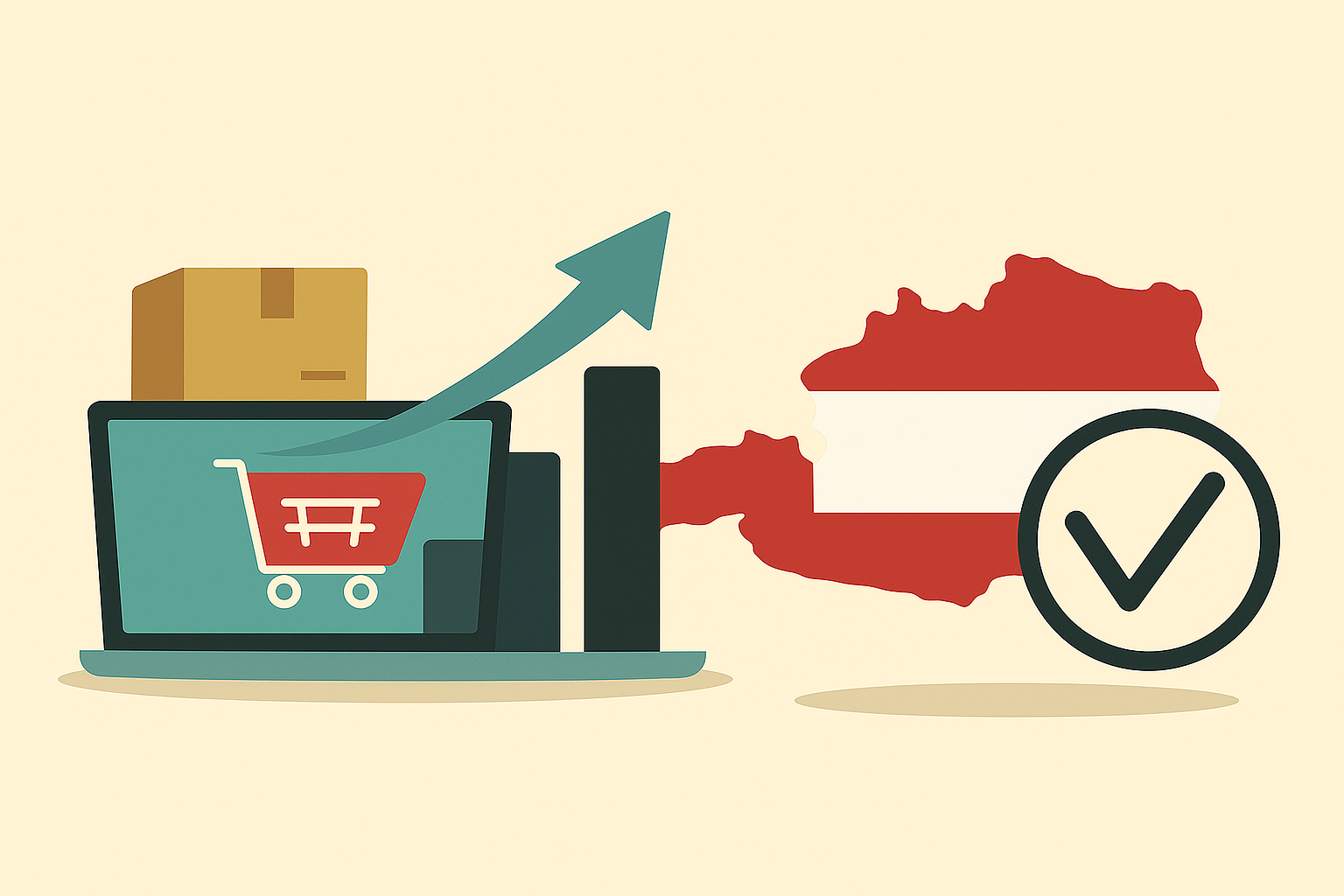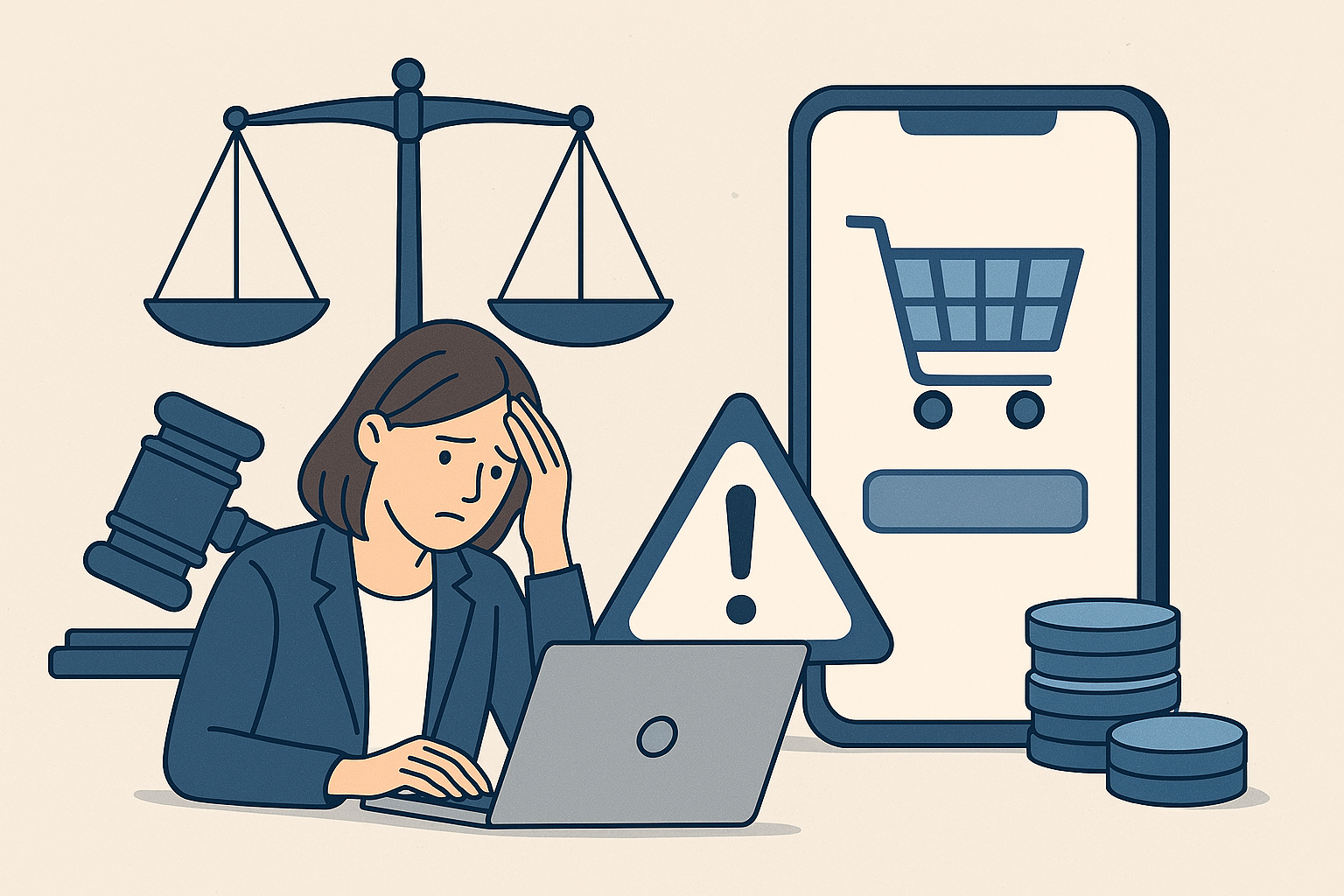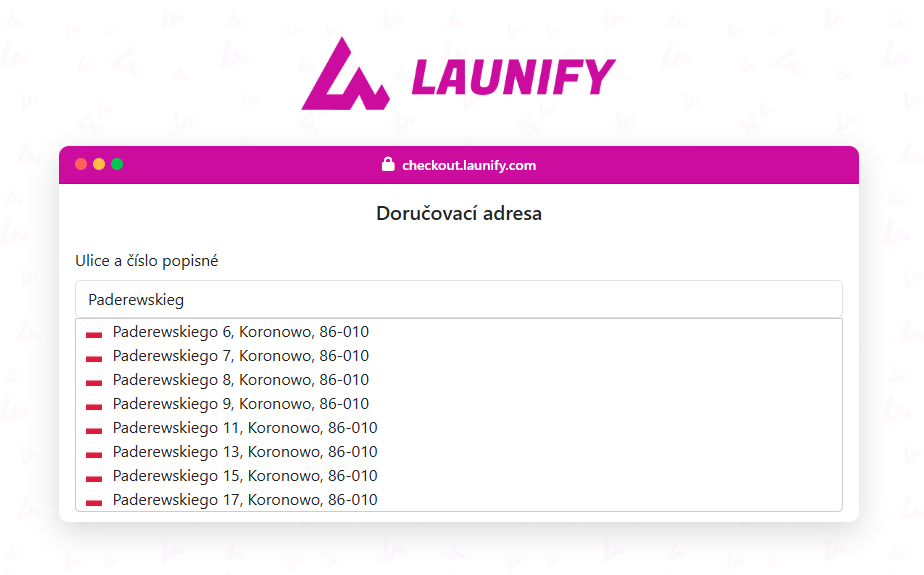Article
E-shop Expansion: What to Focus on in Austria
Neighboring Austria is the first choice for many Czech e-shops for foreign expansion. And rightly so! Although it is a smaller market than the German giant, it hides considerable potential and many similarities with the Czech e-commerce environment.

Published on: 29.5.2025 • Written by: Team Launify Reading Time: 15 min
Austria in a nutshell: Economy and population
Austria is a developed country with 8.95 million inhabitants (2019 data) and a strong market economy. With a per capita GDP estimated at EUR 45,155 in 2019, Austrians have high purchasing power. In addition, the vast majority of the population speaks German, which greatly simplifies the localization of your e-shop.
Despite its "compactness", Austria is a transit country and an important crossroads for travel to the Balkans and Italy. Its economy is strongly linked to the EU, with 71% of exports going to member states (mainly Germany) and 78% of imports coming from the EU.
Austrian e-commerce market: Growing potential
Although the Austrian e-commerce market does not reach the volumes of the German one, its dynamics are impressive. In 2018, turnover amounted to EUR 5.289 billion and the estimate for 2019 was around EUR 5.746 billion, with year-on-year growth of over 8%. And according to predictions, it should reach almost EUR 7 billion by 2023!
With 6.8 million internet users (which is about 76% of the population) and a stable year-on-year increase, it is clear that online shopping is established in Austria. Austrians are used to shopping online and on average spend EUR 773 per year on online purchases.
What do Austrians buy online the most? The queen of categories is clothing (29% of turnover), followed by electronics (29%) and toys (23%). These trends are unlikely to change much in the coming years.
Mobile trend and cross-border shopping
Similar to Germany, the importance of mobile shopping is growing in Austria. Most Austrians own a smartphone (75%), making a mobile interface for your e-shop an absolute necessity.
An interesting fact is the high proportion of cross-border purchases. Austrians have no problem shopping in foreign e-shops, mostly in German ones. This can be an advantage for you - if you are already targeting the German market, expanding to Austria is a logical next step and can bring synergies.
Payment methods: Bank transfer and e-wallet lead
Austrian payment preferences differ slightly from German ones, but these are still specifics that need to be respected.
Here is an overview of the most popular payment methods in Austria (according to 2019 data):
- Bank transfer and E-wallet (PayPal, etc.): Together around 54% of transactions.
- Payment card: 27%.
- Cash on delivery: The share of this method is decreasing, it is rather marginal.
It is therefore clear that you cannot do without offering bank transfer and popular e-wallets (especially PayPal) in Austria.
Delivery methods: Flexibility and trust
Austrians trust the Austrian Post and private carriers the most. The most popular delivery method is collection at pick-up points, which offers customers flexibility.
The most used carriers include:
- DHL (world leader in logistics)
- DPD (strong European player)
- Hermes Group (comprehensive logistics services)
- Zásilkovna (popular in the Czech Republic, with a dispersed European network)
- UPS (global giant)
- GLS (strong in Europe)
For success, it is crucial to offer Austrians the possibility to choose between these proven carriers and ideally also the possibility to pick up at pick-up points.
Product returns and legal aspects: Pay attention to details!
German-speaking markets often have stricter legislation for e-commerce, and Austria is no exception.
Although it is similar to Czech law in many respects, there are important differences:
- Goods return period: The minimum legal period for returning goods in Austria is 7 days. This is shorter than in Germany (14 days), and Austrian customers often prefer longer periods. In order to increase customer trust and satisfaction, it is therefore appropriate to offer a longer period than the legal minimum.
- Localization and language: As in Germany, precise and error-free German on the e-shop is absolutely essential in Austria. Any language deficiencies can undermine credibility.
- Customer support: Austrians will appreciate free contact and support on an Austrian telephone number with a native speaker. Quality customer support is key to building trust.
- Transparency: All prices must be inclusive of VAT, terms and conditions and privacy policy (GDPR) must be clear and understandable.
- Currency: The official currency is of course Euro (€).
Local comparison sites and sales platforms
To make your e-shop visible on the Austrian market, it pays to use local price comparison sites and sales platforms.
Most popular online sales platforms:
- Amazon (fully localized for Austria, orders often from Germany)
- Zalando (German clothing and footwear retailer, very popular in Austria as well)
- Universal (clothing, footwear, home accessories)
- E-tec.at (electronics)
- Electronic4you (Hi-Fi, video, home appliances)
- MediaMarkt (movies, electronics, items for home and garden)
Largest price comparison sites:
- Geizhals: The most visited comparison site for hardware, software, video and photo.
- Idealo: Huge product database (over 100 million).
- Preisjager: Searching, sharing and rating the best deals from Austrian e-shops.
- Preisvergleich: Over 10 million product items and more than 400 stores, open to foreign e-shops as well.
Tip for the end: Joint expansion with Germany
Given the strong links between the Austrian and German markets and the high proportion of cross-border purchases by Austrians in Germany, a strategy of expanding into both countries simultaneously is very effective. Although the initial costs may be higher, the synergies and mutual discovery of your e-shop in both markets will quickly pay off. Austrians will discover your e-shop faster on the German market and vice versa.
In short, the Austrian market is a great opportunity for Czech e-shops. With careful localization, understanding of local customs and emphasis on customer service, the gates of Austrian e-commerce are wide open for you!


